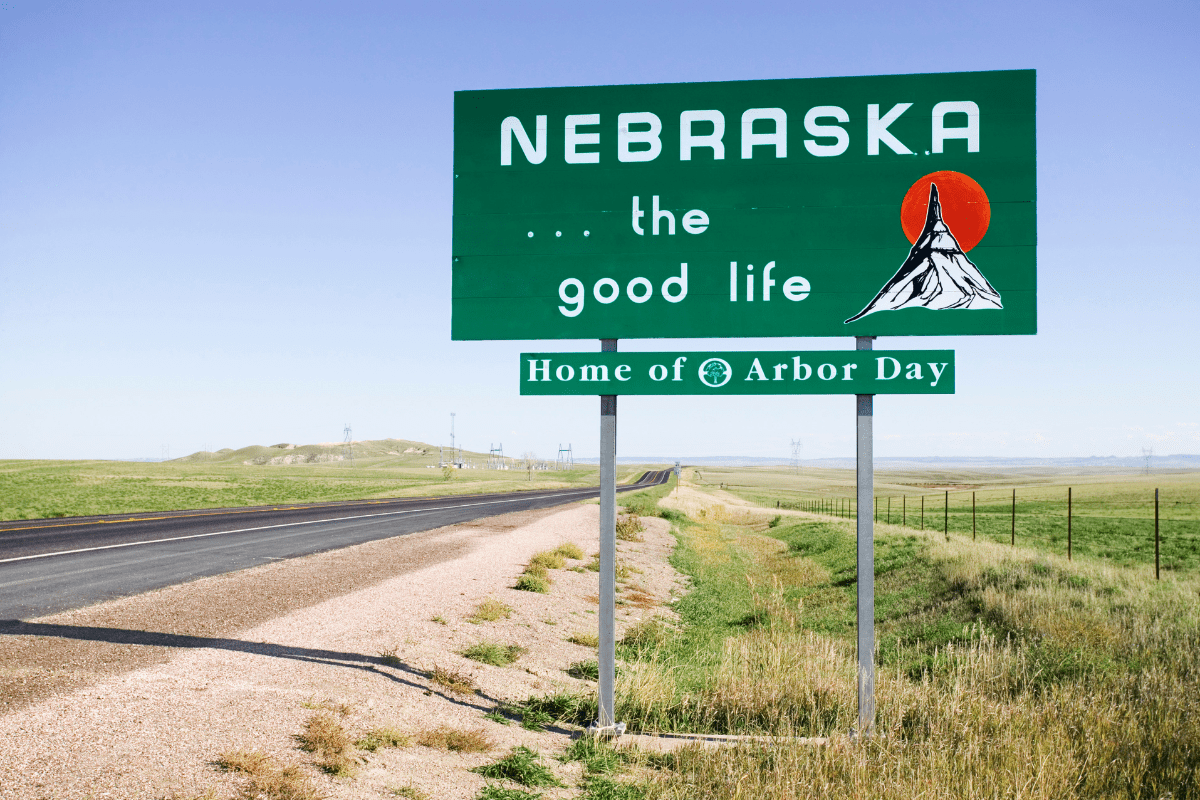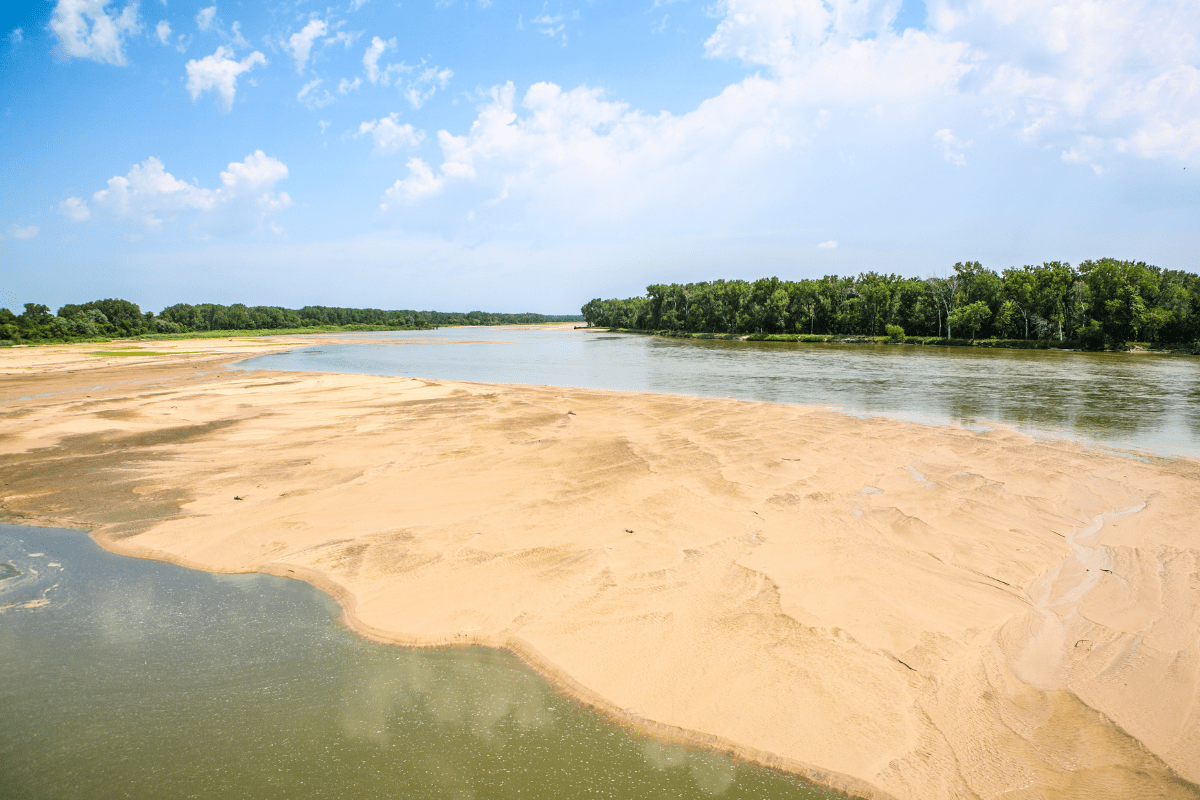At one second past midnight on July 1, 1925, Florence Hazen Miller of Crete, Nebraska, hoisted a flag she had personally designed up a flagpole, letting it fly until 8 a.m. This wasn't just any flag… it was the very first official Nebraska state flag, and Miller had championed its creation through years of advocacy. Her midnight flag-raising captures something essential about Nebraska's state symbols: they're deeply personal stories of citizen passion, prairie ingenuity, and unexpected controversy that shaped the Cornhusker State's identity.
Every symbol tells a Nebraska story
Nebraska boasts 26 official state symbols that tell the story of westward expansion, agricultural innovation, and natural wonders. From the Western Meadowlark that six states share to the uniquely Nebraskan invention of Kool-Aid, these symbols generate millions in tourism revenue while preserving the state's heritage.
The historical foundations that started it all
The oldest symbols anchor Nebraska's identity from its earliest days. The state seal and motto both date to 1867, the year of statehood. That motto, "Equality Before the Law," emerged from post-Civil War controversy over Black voting rights, adopted one day after Nebraska ratified the Fourteenth Amendment.
The state flag didn't arrive until 1925, and let's be honest… it's not winning any beauty contests. Vexillologists (yes, that's a real job studying flags) ranked it second-worst in North America. In 2017, it flew upside down at the Capitol for 10 days before anyone noticed. Maybe that's why Florence Miller felt compelled to raise it at midnight?
The goldenrod became the state flower in 1895 after heated legislative debates. Senator John C. Sprecher of Schuyler advocated for violet instead, but Senator Charles H. Sloan of Geneva defended goldenrod as representing "the hardy endurance of Nebraska's pioneers." The Western Meadowlark joined as state bird in 1929, chosen by student votes organized by the Nebraska Federation of Women's Clubs.
Natural symbols showcase ecological diversity
Nebraska's natural symbols reveal surprising biodiversity beyond cornfields. The Eastern Cottonwood replaced the American elm as state tree in 1972 after Dutch elm disease devastated elm populations. These fast-growing "pioneers of the prairie" provided quick shelter for homesteaders.
The wildlife roster includes:
- White-tailed Deer (1981)
- Channel Catfish (1997)
- Honeybee (1975)
- Ornate Box Turtle (2022)
- Sandhill Crane (2022)
Lewis and Clark's journals record catching 490 catfish in a single day near present-day Nebraska. The honeybee provides $10 billion annually in crop pollination value across 90+ crops, though Nebraska beekeepers face a 67% colony loss rate crisis.
Underground treasures include mammoth fossils, blue chalcedony, and prairie agate (all designated in 1967). "Archie," the world's tallest mounted mammoth at 14 feet, stands in the University of Nebraska State Museum where students touch his bronze foot for luck. The Holdrege soil series, covering 1.8 million acres, represents the agricultural foundation with remarkable 10-11 inch water capacity.
Cultural symbols reveal creative spirit
"Beautiful Nebraska" became the state song in 1967 after Russian immigrant Jim Fras lay in tall grass near Lincoln and had a melody "pop into his head." He later said, "It's a one-time inspiration. No one asked or ordered me to write it. I wanted to pay tribute to my adopted state."
The square dance (1997) connected isolated prairie communities, while Nebraska's most famous cultural symbol might surprise you. In 1927, Edwin Perkins invented Kool-Aid in Hastings, becoming a Depression-era hero by cutting the price from 10 to 5 cents. The legislature made it the official soft drink in 1998, creating what locals call "The State That Drinks Its Own Kool-Aid"… both literally true and economically savvy.
Students, citizens, and surprising champions
Nebraska's tradition of citizen advocacy for state symbols shows democracy at its most charming. These aren't decisions made in smoke-filled rooms, they're campaigns led by elementary school students and women's clubs.
When fourth graders take on the legislature
Valley Elementary's fourth-grade class in 1997 exemplifies this tradition. Under teacher Sandy Perry's guidance, these determined students:
- Sent 250 letters to legislative districts
- Testified before the legislature
- Received support from President Clinton
- Successfully designated the Channel Catfish
Auburn Calvert Elementary's third-grade class had already paved the way in 1975, successfully lobbying for the honeybee while emphasizing the state's $6 million honey industry.
The Ornate Box Turtle became state reptile after a 2017 public contest where it beat five other reptiles. Governor Pete Ricketts made it official in October 2022, showing that citizen engagement continues today.
Not everyone agrees on goldenrod
Controversy occasionally sparked passionate debates that would make modern Twitter fights look tame. The 1895 goldenrod debate saw legislators divided between Team Goldenrod and Team Violet. Ida Brockman wrote that "nothing could better represent the hardy endurance of Nebraska's pioneers" than goldenrod, ultimately swaying the vote.
Even successful symbols faced challenges. The cottonwood only became state tree after disease forced a change from the American elm. Senator Calvin Carsten's bill originally proposed green ash before amendments settled on cottonwood.
Nebraska's unique power to designate symbols
Here's where Nebraska gets really interesting. Most states require lengthy legislative processes to designate official symbols. Nebraska? We gave that power to the governor.
The 1997 game-changer nobody saw coming
Legislative Bill 106 in 1997 revolutionized state symbol designation. According to Section 90-119: "The Governor may designate official state items, including animals, plants, minerals, and other things. Legislative approval of any such designation is not required."
This makes Nebraska the only state allowing gubernatorial symbol designation without legislative approval. Governor Ben Nelson immediately exercised this authority, designating eight symbols in his final year. The channel catfish, square dance, and Platte River all gained official status within months rather than years of debate.
David L. Bristow at the Nebraska State Historical Society notes this reflects "contrary to the practices of other states" but creates remarkable efficiency. Recent governors have used this power sparingly… Governor Pete Ricketts added the sandhill crane and ornate box turtle in 2022, the first new symbols since 1998.
Million-dollar migrations and Kool-Aid tourism
Nebraska's symbols aren't just feel-good designations, they're economic engines driving significant tourism revenue.
Sandhill cranes bring international visitors
The sandhill crane migration generates $14.3 million annually for a 13-county region. Consider these impressive numbers:
- 46,500 visitors spending $93.37 daily
- Supports 182 full-time jobs
- 80% of global crane population
- International visitors book year ahead
Audubon's Rowe Sanctuary near Gibbon offers guided blind tours at sunrise and sunset for $60 per person. The Crane Trust provides VIP overnight experiences. Japanese visitors particularly love the cranes, often booking trips 12 months in advance.
Tourism growth outpaces the nation
Nebraska tourism has exploded recently. Visitor spending increased from $3.5 billion in 2019 to $4.6 billion in 2023… a 29.4% increase compared to 7% nationally. Tourist interest in Nebraska rose from 19% to 39%.
John Ricks, Director of the Nebraska Tourism Commission, credits provocative marketing: "To make people listen, you have to hook them somehow. We had to shake people up." Apparently, it worked.
Kool-Aid Days in Hastings exemplifies symbol-based tourism success. The August festival features:
- World's Largest Kool-Aid Stand
- Kwickest Kool-Aid Drinking Contest
- Kardboard Boat Races
- Thousands of annual visitors
The Hastings Museum houses a permanent "Kool-Aid: Discover the Dream" exhibit showcasing artifacts including the original Kool-Aid Man costume.
Where the symbols come alive across Nebraska
Experiencing Nebraska's symbols requires strategic timing and location knowledge. Here's your practical guide to symbol tourism.
Crane watching requires planning
Sandhill cranes peak mid-March along the Platte River. Free public viewing is available at:
- Richard Plautz Crane Viewing Site (1.5 miles south of I-80 Exit 285)
- Fort Kearny State Recreation Area's Hike-Bike trail bridge
For guided experiences, Rowe Sanctuary offers sunrise and sunset blind tours. Dress warmly… March mornings on the Platte are cold, but watching thousands of cranes lift off at sunrise makes frozen toes worthwhile.
Year-round symbol experiences
The Nebraska State Capitol offers free 50-60 minute guided tours showcasing state symbols in artwork throughout the building. The gift shop sells official Nebraska flags actually flown over the Capitol, perfect for your own midnight flag-raising.
At the University of Nebraska State Museum, "Archie" the Mammoth awaits. Students developed the tradition of touching his bronze foot before exams. No statistics exist on whether it helps grades, but it can't hurt.
Baker's Candies in Greenwood features Kool-Aid on tap, while the Crane Trust's Crimson Crown Gift Shop offers photography and nature-themed items. Specialty license plates featuring sandhill cranes and ornate box turtles generate revenue for wildlife conservation.
Educational programs connect symbols to citizens
Nebraska 4-H serves one in three age-eligible youth in all 93 counties with symbol-related projects. The Nebraska Passport Program celebrated its 15th anniversary in 2024 with 1,078 "Champions" visiting all 70 stops, generating 3,100 additional visitors per destination from 43 states.
Nebraska leads where others follow
Nebraska's Western Meadowlark represents the most shared state bird regionally. Six states total claim it (Kansas, Montana, North Dakota, Oregon, and Wyoming joined Nebraska). Ironically, John James Audubon named it Sturnella neglecta meaning "overlooked," yet this "neglected" bird became the second-most popular state bird nationally after the Northern Cardinal.
Nebraska designated it first among the group in 1929, following three separate votes by ornithologists, women's clubs, and schoolchildren. Sometimes being first matters.
Unique symbols our neighbors can't claim
While surrounding states chose predictable agricultural symbols, Nebraska elevated Kool-Aid to official status. No other state has an official soft drink, let alone one invented by a local entrepreneur who wanted to help families during the Depression.
The Holdrege soil series represents another unique designation. This isn't just dirt… it's the foundation of Nebraska agriculture, supporting corn, sorghum, wheat, and soybeans across 1.8 million acres with its remarkable water capacity.
Recent modernization efforts show Nebraska continues evolving. Senator Burke Harr's 2017 campaign to redesign the state flag failed, but the fact it flew upside down for 10 days suggests maybe he had a point. Yet Nebraska keeps adding symbols when they matter, with Governors Ricketts adding the sandhill crane and ornate box turtle in 2022.
The stories behind the symbols endure
Florence Hazen Miller's midnight flag-raising in 1925 established a pattern of personal investment in state symbols that continues today. From Edwin Perkins inventing Kool-Aid in his parents' general store to Valley Elementary students lobbying for the channel catfish, Nebraska's symbols emerge from citizen passion rather than committee compromise.
These 26 symbols collectively generate millions in economic impact while preserving Nebraska's heritage for future generations. The original 1867 seal stamping press served 138 years before retirement, symbolizing continuity even as the state modernizes.
Whether watching a million cranes darken the sky above the Platte River, tasting Kool-Aid at the Hastings festival, or touching Archie the Mammoth's foot for luck, Nebraskans and visitors connect with symbols that transform abstract state pride into tangible experiences worth preserving… and worth the midnight celebration Florence Miller started 99 years ago.





